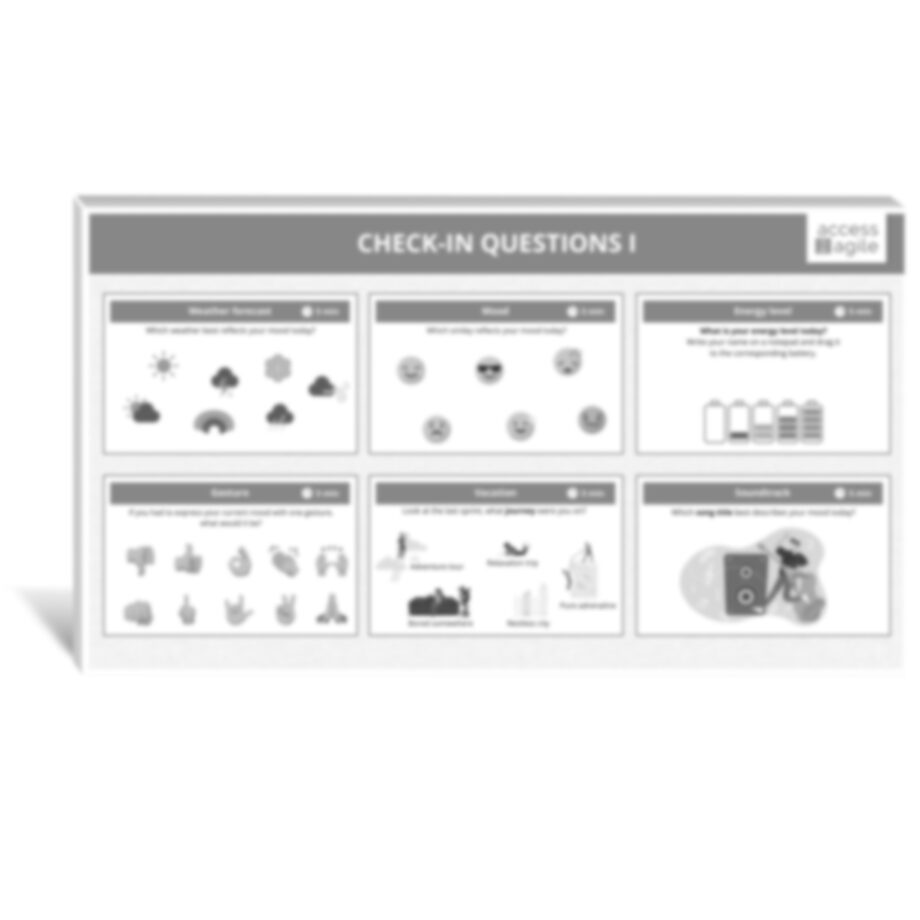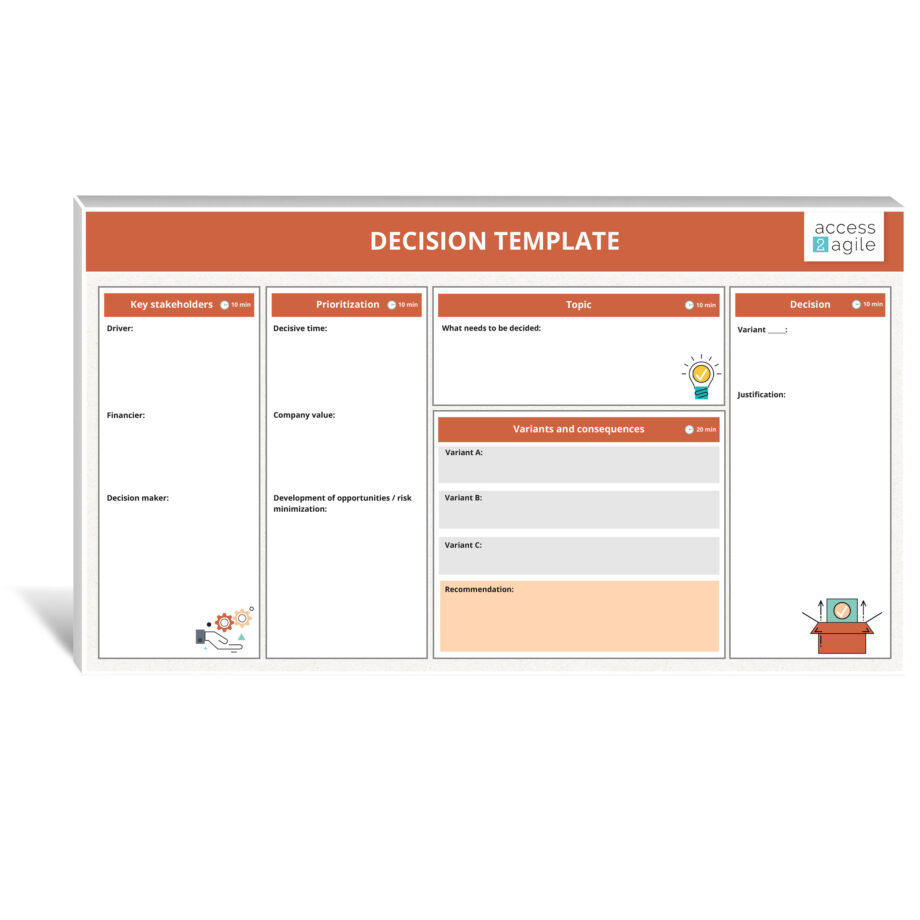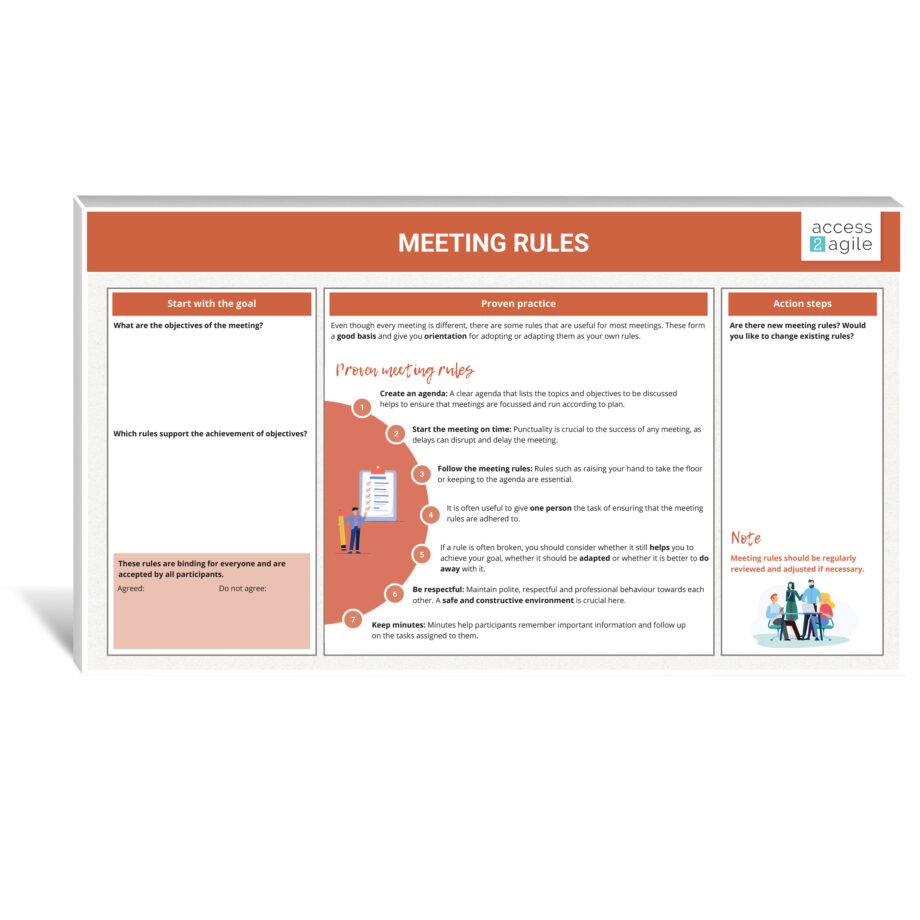For people to work well together, they need to coordinate with each other. The best way to do this is often to have a discussion or a meeting. A conversation enables precise and fast communication. Here it is possible to communicate with more than just words (body language, emphasis) and things can be resolved quickly and easily by asking questions. At the same time, meetings are a curse. Who hasn’t heard the complaints about a flood of meetings that leave little time. Who hasn’t experienced meetings where you wonder afterwards what has actually been achieved?
But what makes a meeting a good meeting? A good meeting achieves the objective of the meeting and is satisfactory for all participants. With the meeting culture templates, we would like to offer you support in organizing your meetings effectively and efficiently so that your time is well spent.
The first step to good meetings: Determine the goal in order to decide whether a meeting is necessary. As a first step, you should ask yourself: What do you want to achieve in the meeting? What is the goal of the meeting? You can ask yourself this both when you are considering setting up a meeting yourself and when you have been invited to a meeting. Please note: A topic is not yet a goal. An objective is not yet a meeting objective. A meeting objective is achievable in the meeting. If you know the goal, you can consider whether a meeting is the best way to achieve this goal. You may realize that an email would be better suited to achieving your goal. If you have been invited to a meeting and do not know what the goal of the meeting is, simply ask the meeting organization. On this basis, you can determine whether your presence is necessary to achieve the goal and whether preparation is required.
The second step to good meetings: setting the agenda. Once you know what you want to achieve in the meeting, you can think about (or ask for) a suitable agenda. This involves thinking about the steps and order in which the goal can be achieved. It is helpful to estimate the time required for each agenda item and to record this in writing. This will help later when the meeting is held.
he third step to good meetings: Invite the right participants. The goal is clear and you’ve drawn up a suitable agenda? Great! Now think about who the people are that you need to make your meeting a success. Invite them to the meeting, state the goal and agenda and, if applicable, the contribution you expect from the person. Keep the number of participants as low as possible. Meetings with many participants tend to take longer and the contribution of the individual is lower. Optimal group interaction occurs with 7 +/- 2 people. The “Meeting agenda template” will help you with your planning.
A goal, the right agenda and the required participants are half the battle for a successful meeting. The following tips will put the finishing touches to your meeting.
Use check-in questions
Do you want all participants to get involved and not be afraid to speak their mind? With the right check-in questions, you can break the ice, introduce the topic and get everyone talking briefly. This increases the likelihood that everyone will participate in your meeting. You can find help with check-in questions as a template in this toolbox.
Timeboxing – setting time limits
A topic always takes up as much space as you give it. Set sensible timeboxes and make sure you stick to them. State the time planned for an agenda item at the beginning. If necessary – especially towards the end of the timebox – remind people to stick to it.
Record decisions directly
Write down the decisions made, tasks and important information directly in the meeting, preferably in front of everyone. This gives all participants the opportunity to check whether there is a common understanding and can refine this if necessary.
Breaks
Breaks are important. They promote productivity. Plan a break at least every 50 minutes or when you notice that concentration is waning. Encourage participants to stand up and move around briefly.
Use the moderator
If you want to actively participate in the discussion yourself, a moderator can help you achieve your goal. The moderator keeps an eye on the time for you, interrupts discussions if necessary and documents results.
End the meeting with a summary
The meeting is about to end. Briefly summarize the key points for everyone. It is best if you have already documented these. Make sure that all participants agree with these points and your documentation.
Control by the group
Managing meetings can present some challenges. Fortunately, everyone involved can help steer the meeting so that it remains valuable for everyone.
After the meeting, hopefully the meeting objective has been achieved. Many of the decisions, tasks and results of your meeting will now be processed elsewhere. So make sure that all participants receive minutes and that the information from the meeting flows to the right places. You can also get feedback from the participants. This will help you learn what you could improve in the future and how to make your meetings even more efficient. A good meeting requires good preparation, adequate management and good follow-up. In the toolbox you will find the “Meeting Card”, which summarises the most important points.





